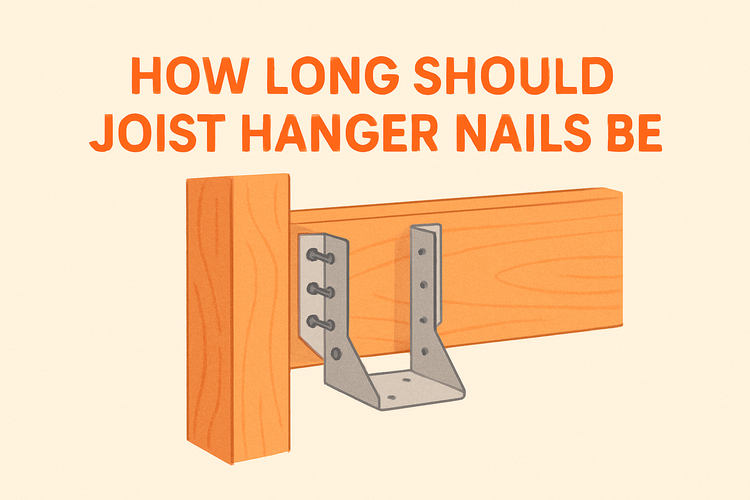How Long Should Joist Hanger Nails Be

Understanding the Importance of Proper Nail Length for Joist Hangers
Choosing the correct nail length for joist hangers is crucial for structural integrity and long-term performance. Improper fastening can lead to weakened support and potential safety hazards.
The effectiveness of joist hangers heavily relies on the nails used, as they secure the hanger to the ledger or beam and connect the joist to the hanger. A nail that's too short may not penetrate deeply enough to create a strong connection, while using an overly long nail may interfere with other components or protrude where it's not intended. It's essential to consider both manufacturer guidelines and building code requirements when selecting nails.
Recommended Nail Sizes for Joist Hangers
Most joist hangers are designed to work with specific nail sizes—for both face mounting and angle nailing into the joist. A common size is 1.5-inch joist hanger nails for securing the hanger to the ledger or beam, and 3.5-inch (16d) nails for diagonal nailing into the joist.
The steel gauge of the joist hanger also influences which nails should be used. Light-duty hangers may accept 1.5-inch short nails, while heavy-duty options often call for longer framing nails. Using undersized fasteners can reduce the load-bearing capacity by over 50%. Properly matched nails ensure that the hanger performs as engineered, preventing joist movement and sagging.
It’s important to consult with the joist hanger manufacturer’s specifications or see the packaging, as many provide diagrams indicating the exact number and length of nails required. Staying within those guidelines not only ensures proper load transfer but also satisfies building inspectors.
To further enhance strength, builders often use structural screws from our Screws and Nails collection, which can sometimes be a stronger alternative to nails for specific joist hanger models.
Factors That Affect Nail Length Selection
The load the joist is expected to carry plays a significant role in determining what nail length is appropriate. Heavier loads mean more stress on the joist hanger connection, which in turn requires long, thicker nails to resist shear forces and pullout.
Another consideration is the thickness of the materials being joined. For example, if you're attaching a hanger to a double ledger or a rim board, longer nails are necessary to penetrate the thicker material and fully embed into solid wood. Environmental exposure also influences nail choice; in coastal or humid environments, galvanised or stainless steel nails of the correct length should be used to prevent corrosion and nail failure.
When working with joist hangers in custom applications, such as angled or offset joist seats, nail lengths may need to be adjusted to maintain the required holding strength. Always plan ahead and inspect the installation angles and structures before choosing your fasteners.
Understanding Nail Placement and Load Capacity
Equally important to nail length is where and how the nails are placed within the joist hanger. Most hangers have pre-punched holes designed to optimize load distribution. Skipping nails or driving them at off-angles can seriously decrease strength.
The outer flanges of the hanger are meant to grip the ledger or beam tightly, so nails placed in these areas should be fully seated and of the recommended length to ensure that the hanger is flush and secure. Inner nails driven into the supported joist transfer the vertical loads and prevent twisting or rolling, which means the correct nail length here is essential for maintaining alignment and stability.
Misalignment or missing fasteners can reduce rated load capacity significantly. For larger or engineered wood joists, it's often better to use joist hanger structural screws that can reach deeper and provide higher withdrawal resistance than nails alone. Check out the available options under our Joist Hangers range for optimal compatibility.
Common Mistakes and How to Avoid Them
One of the most frequent mistakes in joist hanger use is selecting nails based on availability rather than specification. Substituting standard framing nails for joist hanger nails can compromise structural integrity.
Another common issue arises when installers use nails that are too long and end up puncturing through and interfering with adjacent structural elements. Overdriven nails can also deform the hanger flanges, making them less effective in holding the joist in place. Similarly, the use of screws where nails are required (or vice versa) without checking manufacturer instructions can invalidate load ratings and lead to failed inspections.
It’s important to consider the entire connection system—joist hanger, fasteners, and the supporting structure. For installations near base plates or vertical posts, check out the Post Base category for compatible hardware designed to work cohesively with joist hangers and ensure a stable, code-compliant build.
